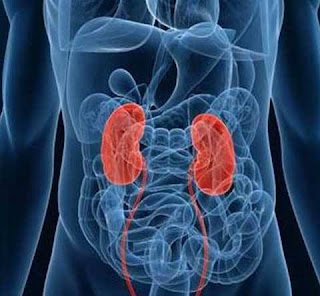The Process of Urine Test
How To Prepare
Do not eat foods that can colour the urine, such as blackberries, beets, and rhubarb, before the test. Do not exercise strenuously before the test.
Tell your doctor if you are menstruating or close to starting your menstrual period. Your doctor may want to wait to do the test.
Your doctor may ask you to stop taking certain medicines that colour the urine. These include vitamin B, phenazopyridine (Pyridium), rifampin, and phenytoin (Dilantin). Be sure to tell your doctor if you are taking diuretics, which may affect the test results.
Talk to your doctor any concerns you have regarding the need for the test, its risks, how it will be done, or what the results will mean. To help you understand the importance of this test, fill out the medical test information form .
How It Is Done
A routine urine test can be done in your doctor's office, clinic, or lab. You may also be asked to collect a urine sample at home and bring it with you to the office or lab for testing.
Collecting a urine sample from a small child or baby is done by using a special plastic bag with tape around its opening. The bag is placed around the child's genitals until he or she urinates. Then you carefully remove the bag. To collect a urine sample from a very sick baby, a doctor may use a urinary catheter through the urethra or a needle through the baby's belly directly into the bladder (suprapubic tap).
Clean-catch midstream one-time urine collection
· Wash your hands to make sure they are clean before collecting the urine.
· If the collection cup has a lid, remove it carefully and set it down with the inner surface up. Do not touch the inside of the cup with your fingers.
· Clean the area around your genitals.
A man should retract the foreskin, if present, and clean the head of his penis with medicated towelettes or swabs.
A woman should spread open the genital folds of skin with one hand. Then she can use
her other hand to clean the area around the urethra with medicated towelettes or swabs. She should wipe the area from front to back so bacteria from the anus is not wiped across the urethra.
· Begin urinating into the toilet or urinal. A woman should hold apart the genital folds of skin while she urinates.
· After the urine has flowed for several seconds, place the collection cup into the urine stream and collect about 60 mL (2 fl oz) of this "midstream" urine without stopping your flow of urine.
· Do not touch the rim of the cup to your genital area. Do not get toilet paper, pubic hair, stool (feces), menstrual blood, or anything else in the urine sample.· Finish urinating into the toilet or urinal.
· Carefully replace and tighten the lid on the cup, and then return it to the lab. If you are collecting the urine at home and cannot get it to the lab in an hour, refrigerate it.
Double-voided urine sample collection
This method collects the urine your body is making right now.
· Urinate into the toilet or urinal. Do not collect any of this urine.
· Drink a large glass of water, and wait about 30 to 40 minutes.
· Then get a urine sample. Follow the instructions above for collecting a clean-catch urine sample.
Return the urine sample to the lab. If you are collecting the urine at home and cannot get it to the lab in an hour, refrigerate it.
24-hour urine collection
Your doctor may ask you to collect your urine for 24 hours.
· The collection period usually starts in the morning. When you first get up, urinate—but don't save this urine. Write down the time that you urinated to mark the beginning of your 24-hour collection period.
· For the next 24 hours, collect all your urine. Your doctor will usually provide you with a large container that holds about 4 L (1 gal) and has a small amount of preservative in it. Urinate into a smaller, clean container, and then pour the urine into the large container. Avoid touching the inside of the container with your fingers.
· Keep the large container in the refrigerator during the collection period.
· Urinate for the final time at or just before the end of the 24-hour period. Add this urine to the large container, and write down the time.
· Avoid getting toilet paper, pubic hair, stool (feces), menstrual blood, or other foreign matter in the urine sample.
Return the urine sample to the lab.




评论
发表评论